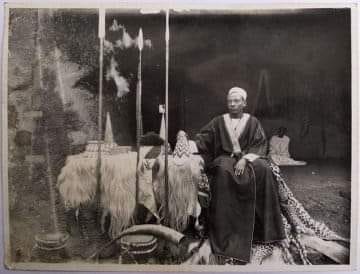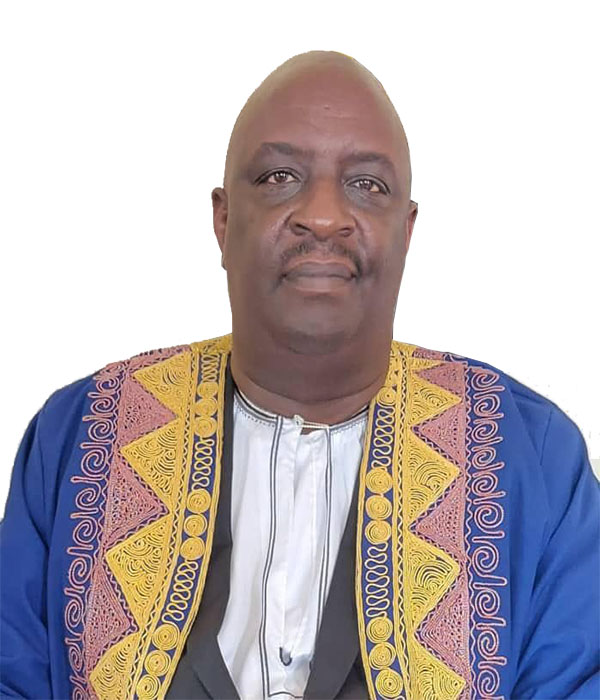- November 26, 2020
- Posted by: Communications
- Category: Our History

Omukama Kamurasi Kyebambe IV (1822–1869) was the 22nd Omukama of Bunyoro from 1852 to his death in 1869.
The Reign of Omukama Kyebambe IV Kamurasi 1852 – 1869
Kamurasi ascended the throne of Bunyoro Kitara in 1852 after a civil war in which he killed his brother Olimi V Rwakabale. His praise names were: Rukanama of Kanembe, Okukidi of Isaka, Mirundi Egoroire. He was given the name of Kyebambe because he was a usurper. Although he tried to maintain his throne by the sword he did not always succeed. He ruled precariously but with dignity until his death in 1869.
When Kamurasi became the king of Bunyoro-Kitara, his immediate plan was to move against the rebellious princes and consolidate his authority throughout the kingdom. He for example dismissed prince Kaliba chief of Kyaka and appointed Dwetakya to rule the county. He dismissed Mwanga from Mwenge and appointed Materu in his place. Kamurasi moved his capital to Kicunda Rwempanga and later transferred it to Rwenyenje.
His major problem was the princes of Chope, Kachope and Isagara, who constantly challenged his authority and failed him to fully establish his authority over the province of Chope. Nyakatura explains to us that, after a short period on the throne, Kamurasi faced attacks from chope which made him flee to Busesa. When he had ruled for eight month, his adversaries made another attack in which they killed many people and raided the kingdom. This made Kamurasi to organize a powerful army to repulse the invaders. In his mobilization he tactfully declared that he had mobilized the army to fight Buganda because he never wanted the rebellious princes to take flight because of the size of his army. A pitched battle was fought and Kamurasi was wounded in the finger but Kachope and his men fled. The news of the wounding of the king set his brother and Saza chief of Buruli, Kamihanda Omudaya moving so that he could rescue the king. Kamihanda Omudaya encountered the rebel forces at a place called Kokoitwa.
In a battle which ensued, Kamihanda completely destroyed the rebel elements that had been opposed to Kamurasi. Many members of the royal family were slain in the battle. Some of those killed included Nsale, Kato, Kwabigoye, Manyindo, Kabadima, Kabanyomozi, Fotoire and Mampohya. The battle came to be referred to as the Kokoitwa disaster (ekya Kokoitwa) because many princes had lost their lives. With this, Kamurasi temporarily pacified chope. Temporary in the sense that although he had managed to reestablish his authority, he totally failed to devise means of surbodinating the princes and the aristocracy. Kyebambe IV Kamurasi produced many children of whom the known are listed below: –
Kabigumire
Kabagungu
Kabalega
Isingoma
Ntiri
Munu
Kanyabuzana
Kabatongole
Kabasenya
Kabasunga
Kabagonza
Ndagano Rutakya
Mugizi I
Kanyamukono
Kabahukya
Kaikara
Beza Barongo
Nyaknto
Kahamba
Kabasesera
Nyakaisiki I
Kijamurubi
Rutanana
Rukosa
Nyakaisiki II
Calimbwa
Kabahinda
Kalyegira
Komusenyi
Kasuzi
Kafuzi
Rwigirwa
During the reign of Kamurasi a man called Igwahabi son of Nyakatura of Bamwoli clan rose to prominence. He was a very good dancer. Kamurasi rewarded him as one of his pages and called him Nyakamatura. The latter was elevated to saza chief of Bugahya to fill the vacant position of Jawe Nyinekiringa who was killed by prince Nyaika to avenge the death of his father.
Nyakamatura became a very powerful chief even during the reign of Cwa II Kabalega. He produced the famous Paulo Byabacwezi who succeeded Nyakamatura as saza chief of Bugahya in 1893. He was significant during the reign of Kitahimbwa and Duhaga II. He was a caretaker after the capture of Omukama Kabalega.
Kamurasi contributed greatly to the revival of Bunyoro-Kitara Kingdom by admitting to his Kingdom Arab-trade from the north and the Swahili-Arab traders from the East African Coast. Before the Arabs came, Bunyoro had flourished as a base of long distance trade in the interlacustrine region. The advent of the Arabs and Swahili availed Bunyoro greater markets for her products. Exports of Bunyoro included iron goods such as hoes and spearheads produced from local iron deposits and salt from the large deposits at Kibiro on Lake Mwitanzige (Albert). Kamurasi exchanged salt with the Arabs, to get guns and other manufactured products. Ivory which was a royal monopoly was directly exchanged with these new traders. Bunyoro goods were disposed off to the outside world and Bunyoro grew wealthier and stronger. With this Kamurasi opened the way for the revival of Bunyoro’s former military power over its neighbours.
Because Kamurasi had committed himself to revive the power of Bunyoro, he tried to avoid confrontation before his centre was strong enough to stand foreign challenges. Instead he welcomed and exploited the presence of foreigners to strengthen his kingdom. When Speke and Grant the first Europeans arrived in Bunyoro on 8th September 1862, Kamurasi welcomed them well. He treated them with great hospitality and provided them with food and beer. The two explorers who had come to Bunyoro via Buganda, stayed at Kamurasi’s palace for two months before moving on to the Sudan.
Speke and Grant observed that Kamurasi was kind and a king of mild disposition compared to Mutesa of Buganda. Speke and Grant told the king that their mission to Bunyoro was motivated by a desire to establish trading relations between Kitara and Europe and requested Kamurasi’s co-operation in this venture. They gave him a Bible and explained to him the tenets of the Christian faith. They offered to educate two of Kamurasi’s sons but Kamurasi refused to hand over his sons to the foreigners he did not know. He instead offered to give them two of his pages who were not princes. Speke and Grant rejected them. During their presence in Bunyoro, the two explorers heard of other while men in Acholi and sent messages to investigate who they were. It turned out however, that the so-called whitemen were Arab Slave Traders who had established a trading station at Faloro north of Gulu.
While Speke and Grant proceeded northwards. Baker and his wife were descending southward to Bunyoro to look for the whereabouts of Lake Albert. On their way to Bunyoro, Baker and his wife met the aggrieved mother of Nsale the slain prince at the battle of Kokoitwa. The lady who consumed with burning determination to avenge her son’s death tried to persuade Baker to team up with Ruyonga to fight against Kamurasi but Baker declined to offer assistance because he had been advised by Speke and Grant to reach Kamurasi’s palace. The Bakers spent one year in Bunyoro in the course of which they discovered and named lake Albert (which already had a Runyoro name, Mwitanzige, ‘the locust kill, and sailed up its eastern coast.
The Bakers were hardihood and possessed physical courage, but they showed little tact or sympathy in their dealings with the Banyoro. Though they did not conflict with Kamurasi openly, they continuously strained relations with the King. Baker must have known that Kamurasi had little ground for trusting him and his escorts from southern Sudanese, but he made little allowance for this in his dealing with him. He wrote bitterly about the Nyoro King, charging and accusing him of duplicity, cowardice and greed. The description he gave of the King was that his character was below that of the most petty chiefs that he had ever seen.
This extremely violent antipathy which Baker showed to Kamurasi, is more understandable if it is remembered that until he reached Bunyoro his experience of African rulers had been confined to the comparatively minor head men of the sequentary nilotic societies of the north. The magnificence of an African court and the evasive autocratic manner of the Omukama, ruling an area larger than England itself were something new in Baker’s experience. It must be added that, Kamurasi’s refusal to conform to Bakers’s idea of a petty African chief must have disconcerted Baker very much. Baker was obsessed with those type of reactions because he never came by way of a very autocratic Ganda court, as Speke and Grant did.
Baker and his wife left Bunyoro in 1864 and returned in 1872. When he returned he was no longer a private explorer, but Sir Samuel Baker, the Governor General of the Egyptian Equatorial Province. Baker thought Bunyoro was part of the province, and that he was to annex it formally. He found that his friend Kamurasi had died six years after his departure and it was Kabalega his energetic son on the throne. Apparently unaware that Kabalega was the legitimate heir to the throne. Baker accused Kabalega of assassinating Kabigumire. This caused conflicts.
Some accounts reveal that, before Kamurasi died, he had sent to the Omugabe of Nkore for the beautiful women found in his land. Kamurasi died when the women were within three days of arriving at the palace. He died at Kiryandongo in December 1869. He was buried at Ngangi, Bwamiramira Gombolola, Buyanja county (formerly in Buyaga). His mother was called Nyarwegendaho of the Abasita clan.
References:
- J.W. Nyakatura: ‘Anatomy of an African Kingdom A History of Bunyoro- Kitara NLK Publishers, New York 1973
- Ruth Fisher: “Twilight Tales of Black Baganda,” 2nd Edition, Frank Cass & Co. Ltd. 1970
Preceded by
Olimi V Omukama Kabalega.
1859–1869 Succeeded by
Kabalega



